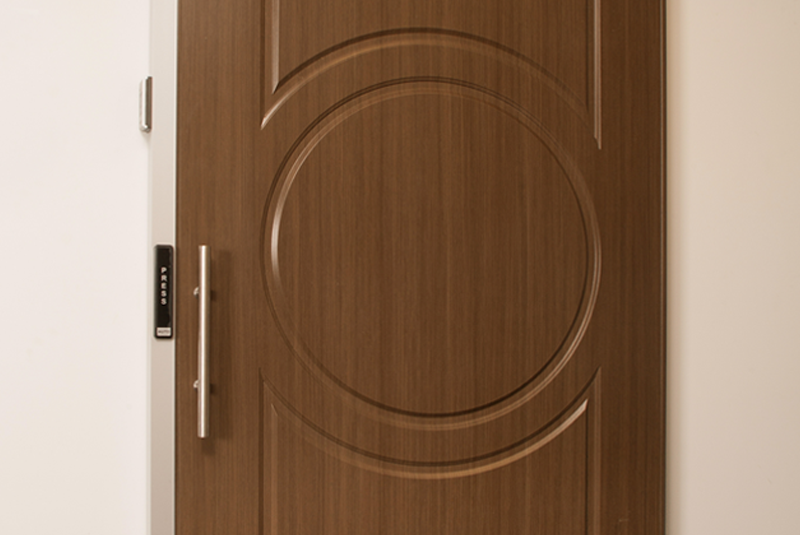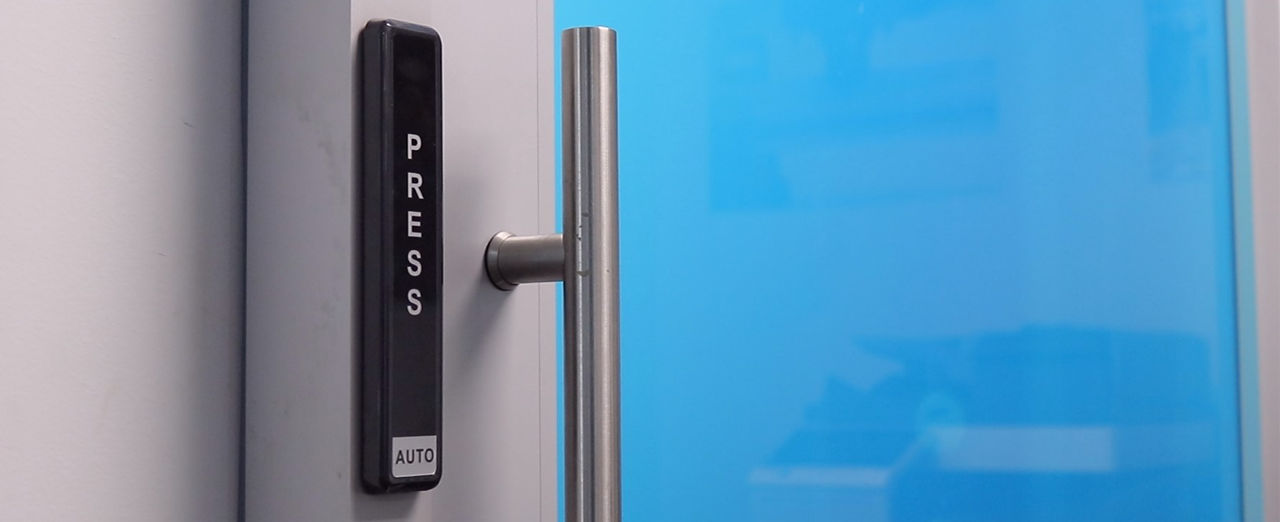
Like their manually operated counterparts, interior automatic sliding doors do not require swing arc trajectories to help designers readily meet maneuvering and approach clearances for a more accessible design. And because they open automatically, they can ease challenges for those with mobility aids.
But are there other ways that interior automatic sliding doors improve accessibility? Absolutely. These systems can sideline opening force requirements, maintain code-driven closing speeds and support easy operation for a wide range of individuals.
Interior automatic sliding door systems solve opening force challenges
According to ADA accessibility standards, the maximum opening force for interior doors is five pounds. While most commercial door systems readily achieve this standard, larger openings or openings that require increased performance capabilities, such as lead-lined doors in radiology departments, can make meeting this requirement more difficult.
Interior automatic sliding doors sideline this issue by opening with the push of a button or a wave of the hand. As such, they can be instrumental in opening up design possibilities without requiring complicated workarounds to ensure accessibility. When a design calls for a specialty or larger-than-average sliding door, project teams can help ensure accessible operation by utilizing interior automatic sliding door systems.
Low-energy operators maintain code-compliant closing speeds
Interior automatic sliding doors also contribute to accessible designs because their closing speeds can be set and adjusted to allow easy and safe passage through the opening. When a door closes at a rate within ADA standards, it supports the movement of people in wheelchairs or with other mobility aids, creating a more accessible built environment.
Further, interior automatic sliding doors like AutoMotion™ from AD Systems can operate on a wide range of power inputs and incorporate optional battery backup to ensure the door system remains operable during power outages. When installed and adjusted in the field by an AAADM certified technician, AutoMotion complies with ANSI/BHMA A156.38 American National Standard for Low Energy Power Slide and Fold Doors to give specifiers and occupants peace of mind that their door system will perform as intended in the field.
Hands-free interior automatic sliding doors offer stability to occupants with mobility aids
Systems like AutoMotion can be programmed for hands-free operation. This means individuals can open the door without having to take their hands off their mobility assistive device to pull the door open. This can translate to more stability when moving through a building, which can mitigate risks of injury due to falls.
When these systems are specified in bi-parting configurations, they can offer even wider openings to accommodate bariatric wheelchairs or medical devices that may be difficult to move through a standard opening. Both features allow opening widths to go beyond the minimum requirements listed in the ADA standards, increasing a building’s ability to accommodate a diverse range of individuals.
Beyond minimums: interior automatic sliding doors raise the accessibility bar
Automatic sliding doors can support more accessible environments by allowing specifiers to go beyond the minimum requirements listed in the ADA standards. This ability can be beneficial in health care environments where increased accessibility may be a project goal.
These opening systems can contribute other forms of value to the built environment. From improving building hygiene to increasing security, interior automatic sliding doors can be an opening solution in several project types.







